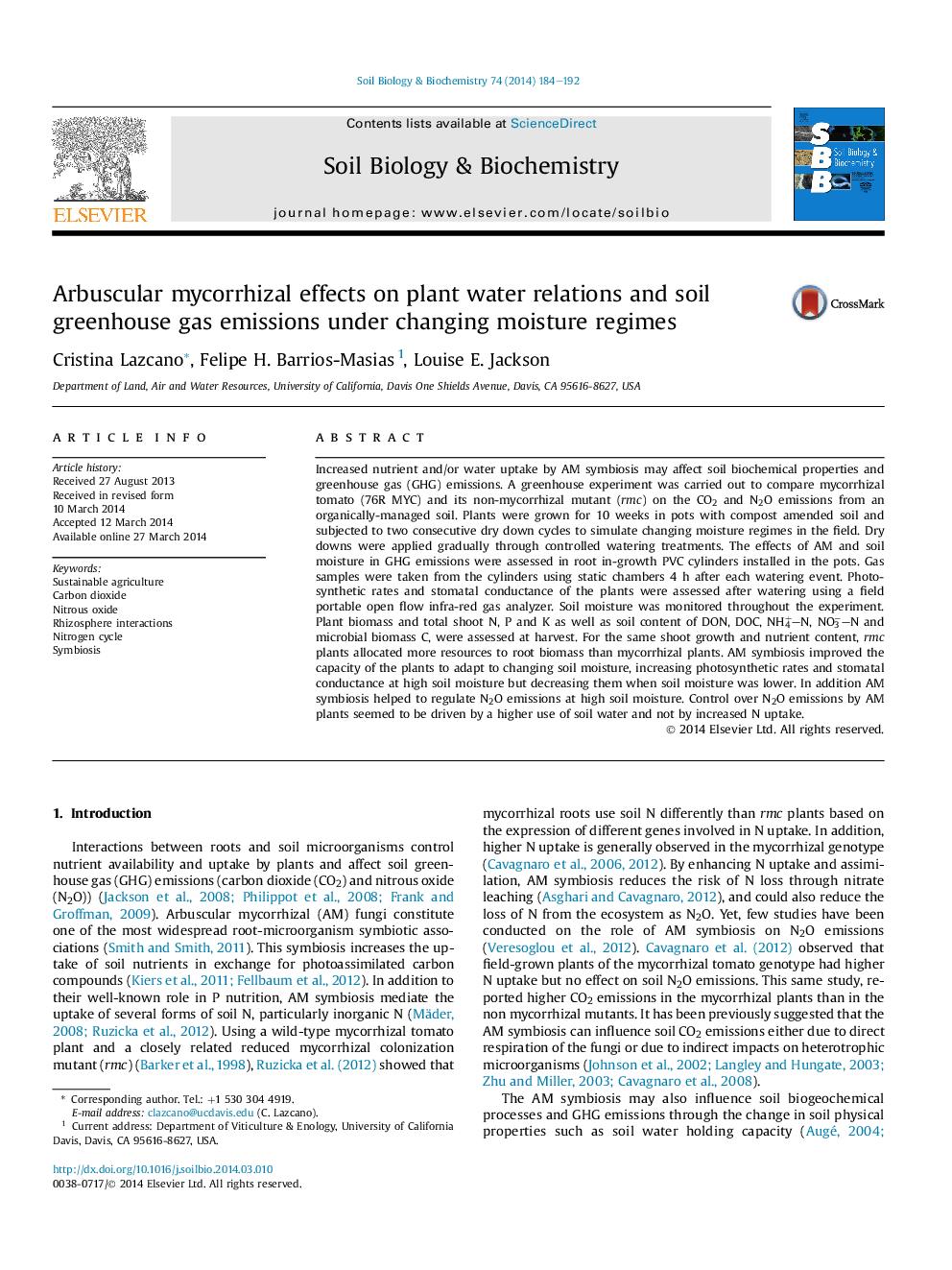| کد مقاله | کد نشریه | سال انتشار | مقاله انگلیسی | نسخه تمام متن |
|---|---|---|---|---|
| 2024626 | 1542610 | 2014 | 9 صفحه PDF | دانلود رایگان |
• Mycorrhizal tomato and its non-mycorrhizal mutant were subjected to changing soil moisture regimes.
• Mycorrhizal plants increased water use at higher soil moisture and tightly controlled water loss.
• Mycorrhizal plants reduced soil N2O, but not CO2 emissions.
• Effects of mycorrhizal plants on N2O were probably related to changes in soil moisture.
Increased nutrient and/or water uptake by AM symbiosis may affect soil biochemical properties and greenhouse gas (GHG) emissions. A greenhouse experiment was carried out to compare mycorrhizal tomato (76R MYC) and its non-mycorrhizal mutant (rmc) on the CO2 and N2O emissions from an organically-managed soil. Plants were grown for 10 weeks in pots with compost amended soil and subjected to two consecutive dry down cycles to simulate changing moisture regimes in the field. Dry downs were applied gradually through controlled watering treatments. The effects of AM and soil moisture in GHG emissions were assessed in root in-growth PVC cylinders installed in the pots. Gas samples were taken from the cylinders using static chambers 4 h after each watering event. Photosynthetic rates and stomatal conductance of the plants were assessed after watering using a field portable open flow infra-red gas analyzer. Soil moisture was monitored throughout the experiment. Plant biomass and total shoot N, P and K as well as soil content of DON, DOC, NH4+–N, NO3−–N and microbial biomass C, were assessed at harvest. For the same shoot growth and nutrient content, rmc plants allocated more resources to root biomass than mycorrhizal plants. AM symbiosis improved the capacity of the plants to adapt to changing soil moisture, increasing photosynthetic rates and stomatal conductance at high soil moisture but decreasing them when soil moisture was lower. In addition AM symbiosis helped to regulate N2O emissions at high soil moisture. Control over N2O emissions by AM plants seemed to be driven by a higher use of soil water and not by increased N uptake.
Journal: Soil Biology and Biochemistry - Volume 74, July 2014, Pages 184–192
